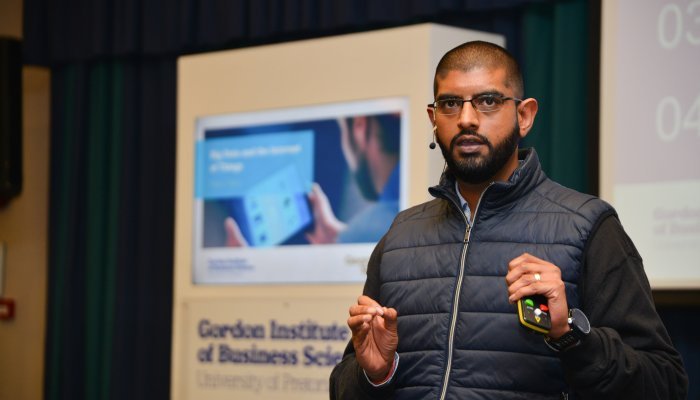ChatGPT – or Chat, as the artificial intelligence (AI) chatbot likes to call itself – burst onto the world stage on 30 November 2022. Within five days of its launch, ChatGPT had reached a million users, surpassing 100 million active users in January 2023. In the process, the 3.5 version unsettled industries and professionals from academia and education, healthcare, marketing and the media. On 14 March 2023, OpenAI released its GPT-4 version, an even slicker, more creative and nuanced version of Chat.
Developed by OpenAI (which was originally co-founded by Elon Musk), and backed by Microsoft, Chat was not the first iteration of this technology, nor will it be the last. It comes from a line of AI siblings, such as InstructGPT, which collectively we refer to as large language models (LLMs). LLMs are sophisticated learning AIs capable of being trained to understand huge amounts of text and data, so much so that they can summarise information and even respond to questions using natural, human-like language.
That is the essence of Chat. It’s a chatbot with which you can interact.
We interact with chatbots all the time, in fact they’ve already become commonplace. If you buy data using Absa’s ChatBanking on WhatsApp or Facebook, that’s a chatbot. Secured an e-boarding pass for FlySafair? Another bot. Or used Ask Discovery to get your latest tax certificate? Again, your query was answered by a machine.
What, then, makes ChatGPT so important in the evolution of this technology?
First, Chat’s user interface is easy, making it a comfortable fit for the public at large. Second is the model itself, which is nothing short of impressive. Any AI has to be trained on a set of variables, and Chat has included just over 170 billion parameters. Its ability to interact with more than 170 billion factors all at once makes Chat a powerful tool and one that is still learning. Just like a human being, Chat will stumble and fall and arrive at some strange conclusions along the way, but this is simply because it is mimicking human behaviour.
Reactions to the tool have been mixed because of this potential unpredictability, with even Musk commenting to CNBC that Chat could be both positive and a potential “risk to society” if left unregulated. Either way, it has the power to transform how we, as humans, interact, learn and navigate the world; so much so that during a presentation at the RageX conference on 9 December 2022 I was already prepared to nail my colours to the mast and dub Chat a true game-changer.
What does this mean for you and me?
Actually, quite a lot. Already we are seeing the potential for Chat to transform how we interact with brands, how we shop and make decisions. This has huge implications for an industry we are all intimately acquainted with – the world of retail.
Retail marketers beware
There are a few big use cases for LLMs which we should consider in the context of the retail sector. While you probably won’t find a Chat robot running around your local store anytime soon, the tool is likely to hold value in the world of e-commerce and, for consumers, as an online buying tool which they can use to compare products across brands. For retailers and brands, this will necessitate up-to-date and accurate information which Chat can draw on to help guide consumers.
As an example, I had to buy a fridge-freezer in January. Since I know nothing about appliances, I decided to take Chat out for a spin. I logged on and asked Chat to compare different fridge brands in South Africa based on specific features and prices. I got a good output, then I did a quick price check to confirm Chat’s findings, and I made a decision. Other than nipping to the shop to see the unit and assess its robustness, I was able to save time and effort.
The ability to compare products and prices is the first impact we can expect to see in the retail space. The second concerns hyper-personalisation. This is not a new arrow in the quiver of advertising and marketing gurus. Just consider how brands like Nutella and Coca-Cola offer personalised labels or cans bearing your name. However, AI can give marketers the personal insights and real-time data they need to create adverts or product specials targeted specifically to consumers and their needs. The potential this opens up for marketers in the retail space is staggering.
Also on the marketing side, we can expect to see AI output influencing how brands engage with customers in a more personal and interactive way. This could take the form of getting instant answers online, or as a support and customer service mechanism which answers questions and provides instant feedback. The likes of Carrefour, Shopify, Chinese giant JD.com and Amazon are already moving into this space, highlighting the fact that companies that choose not to go this route will, in the future, be found wanting – and not just in the marketing space.
LLMs will likely prove beneficial in ensuring that intellectual property and accumulated institutional knowledge can be more easily accessed and retained by retail companies in the future, even as key staff members leave. However, it’s not all positive, and there are a few warning bells already going off for an industry like retail.
Two key questions to ask involve the possible shift from stores as sales channels to showrooms, and what this means for jobs and the physical buying experience. Then there is the issue of brand positioning and differentiation in a crowded retail space. Companies guard this sort of information jealously, but trade secrets would become a veritable open book to an LLM like Chat. This could be construed as a threat to retailers in their current form, although I would argue that the bigger threat will emerge when larger numbers of people begin to blindly trust the output from LLMs, even if the technology gets it wrong from time to time. If you thought fake news was a problem, wait until the technology moves from the sort of narrow AI that powers self-driving cars and morphs into general intelligence, which can do anything a person can – including influence human perceptions.
Education is not immune
Although we’ve already touched on the likes of retail customer service as a space ripe for AI transformation, there are other sectors such as the law, journalism and coding, as well as healthcare and medical research, which will find themselves changed by AI.
My own world of academia is certainly not immune, and since the launch of ChatGPT both myself and my colleagues have taken part in panel discussions and presentations in which we have delved into the applications for education, as well as the ethical concerns which are already emerging.
In late March I was privileged to share a stage with the likes of Prof. Johan Steyn, a research fellow at Stellenbosch University, and the University of Johannesburg’s Prof. Bhaso Ndzendze during a CTU webinar exploring The Impact of AI on the Future of Education. My GIBS colleague, Dr Roze Phillips, did the heavy lifting during the 11th ASSAf Presidential Roundtable Discussion in February this year, during which the Academy of Science of South Africa explored the implications of ChatGPT on higher education.
Speaking at the event, Phillips shared the tempered position GIBS has adopted in the face of contentious debate among some global academics. The likes of Prof. Ethan Mollick from the University of Pennsylvania’s Wharton School in the US has gone full in and now requires students to use the tool to develop what he calls an "emerging skill". Conversely, a number of schools and universities in France, India, Australia and parts of the US have responded by banning the use of ChatGPT, citing issues around misinformation and potential plagiarism.
Urging delegates to “calm your inner luddite”, Phillips took a step back to reinforce that the role of education is to learn, not to pass tests or assessments or even police plagiarism. “I’m very worried we are losing our eye off the student,” she said. “That we should never do. Is our education about being as efficient as we can in assessing students, or is it about the effectiveness of our leaning and their learning? And I’d like to believe it’s about the effectiveness of their learning. ChatGPT can be a partner in learning and it can make the learning process as important, if not more important, than the assessments are.”
As a fellow educator, I concur with Phillips’s comment that “we are going to have to learn about how the transdisciplinary nature of knowledge works to recognise that our technologies are teaching us something about what we teach others”.
Without giving new technologies and tools like LLMs and AIs free rein to control the narrative and the evolution of their use, Phillips raises a rational point that we are all on a learning journey and it behoves us all to harness new ways and means to do our jobs better, to learn more effectively and to use technology to improve our day-to-day lives.
AIs like Chat will not replace humans, but the people who use these tools will rise to the top. So, my advice to medical researchers, accountants or FMCG executives is to use LLMs as an accompaniment to what you do. Don’t panic, but do recognise that of the top emerging technologies in 2023, AI headlined the list. Serious money is being poured into these technologies, which means that in a short space of time LLMs will be ubiquitous and, yes, they will disrupt your business.
The good news is that while you can’t outsmart AI, you can embrace the potential and run with it.
How retailers (and companies in general) should respond to AI
If your organisation is feeling overwhelmed by the arrival of ChatGPT – and now GPT-4 – then follow these simple steps to create a strategy for engagement.
- Figure out where Chat is getting its info and then optimise those channels. Keep information updated and pay special attention to search engine optimisation.
- Not sure how to figure out where Chat is finding its sources? Simply ask Chat where it is getting its info.
- Check if you are missing a channel that Chat is using to pick up information or chatter about your brand. If you don’t have a presence then establish one – quickly.
- Use Chat to pick up insights and gauge sentiment about your brand, service levels and offerings.
- Fiddle. The secret to understanding how to use large language models (LLMs) in your business is to play with it.
As a GIBS student, how can you use Chat?
ChatGPT was opened to the public in November 2022 and by 1 February 2023 GIBS had a succinct policy governing the use of large language models (LLMs) in assessments by students[CB10] .
How did we develop our policy so quickly? We asked ChatGPT.
The result was a comprehensive guide that encouraged the “responsible and ethical use of LLMs that maximises the benefits of this technology while minimising any potential negative impact”.
We flagged the importance of students adhering to ethical considerations when using LLMs, including being aware of how “the technology might impact their own learning and development”, plus the need to act responsibly, to consider the accuracy of the output and any in-built bias, and to act with transparency and accountability.
When we were developing the policy, I put the following provocation to my colleagues about how we should frame our response, focusing on the question of whether or not it mattered if the output was true and if the user had the expertise to verify that the AI output was accurate.
If truth was important, and if the user could take full legal, ethical and moral responsibility for the output, as well as for any inaccuracy or error, then the short answer was: Sure, go ahead and use ChatGPT.
Conversely, if the veracity of the output didn’t need to be accurate, then were would be no harm in using the tool. However, using ChatGPT without the ability to verify the output would be unacceptable if the goal was to produce output that was true.
In other words, rather than banning the use of LLMs outright, we chose to put the onus on our students to apply logic to their decision-making, using our policy as a guide.
Obviously, we’ll continue to update the policy as technology evolves – including Chat’s insights as a guide.
KEY TAKEAWAYS
- In just five days ChatGPT, the artificial intelligence chatbot, reached one million users, surpassing 100 million active users in just two months.
- In March, OpenAI released a new version – GPT-4 – which is even more advanced and nuanced.
- Countless industries stand to be upended by the likes of ChatGPT and GPT-4, including higher education, retail, healthcare and the media.
- In retail, language software has the potential to transform how we interact with brands, how we shop and make decisions.
- For marketers, customer service and support, as well as the hyper-personalisation of customer engagement, will be game-changers.
- It’s not all positive, as OpenAI co-founder Elon Musk notes, without regulation tools ChatGPT could be a “risk to society”.
Prof. Manoj Chiba is an associate professor at GIBS, a management professional, senior consultant and data scientist. Having held senior positions in a variety of sectors, Chiba has the expertise and experience to draw on the relevant understanding to exploit opportunities and align strategies. His training, qualifications and passion for data underpin his philosophy for evidence based decision-making.







